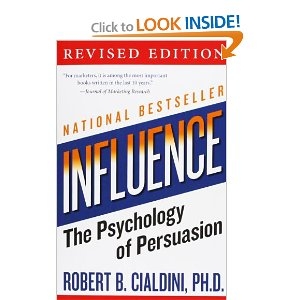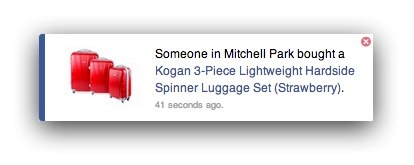Yesterday was Boxing Day in Australia, the day after Christmas.
For you non-commonwealth country readers, here is how Wikipedia defines boxing day –
Boxing Day is traditionally the day following Christmas Day, when servants and tradesmen would receive gifts, known as a “Christmas box”, from their bosses or employers.
However this is what Boxing Day is really about, also thanks to Wikipedia –
In Britain, Canada, and some states of Australia, Boxing Day is primarily known as a shopping holiday, much like Black Friday (the day after Thanksgiving) in the US. It is a time where shops have sales, often with dramatic price reductions.
I told myself that on Boxing Day I would head to downtown Melbourne and investigate a few potential purchases, including a Playstation as a gift for myself, a present for my little brother and a pair of replacement sunglasses.

As I wandered the streets, entered shops and department stores I became progressively more and more agitated.
The hot day combined with the constant bumping into other people, line-ups to enter stores (and even to use an escalator!) eventually became too much, so I decided to sit down in a cafe and do some writing instead.
We Shop Because We Shop
I noticed as I walked around that while there were the odd specials here and there (especially for woman’s handbags – they must be the lure to attract women into the stores), most things were priced as they usually are.
Boxing Day, and “shopping” holidays like it, are social phenomenas constructed by marketers designed to create environments where people feel more inclined to spend.
I know this is true because I can feel it too.
I didn’t need a Playstation any more than I do on other days (actually, “want” is the appropriate word), yet on Boxing Day I felt like it was the right thing to do, since everyone else was buying things too.
Boxing Day is a day designed for consumption. Everyone else is spending money and you are missing out if you don’t.
What I find especially interesting is all of this psychological manipulation is manufactured. It’s coordinated marketing by retailers, which we can learn from as online sellers.
Selling Psychology
Putting aside for the moment any concerns with the over commercialisation of our western society, spending money on things we don’t need, and the idea of being “manipulated” using psychological tricks to convince us to buy things…
…Ahem…
…let’s see how we can take some of these principles and apply them in our own marketing efforts (if you feel compelled to do a little Mr Burns style evil laugh right now go ahead, I don’t blame you).
Justification – The Power Of “Because”
As an online marketer who sells something you can jump on the holiday shopping bandwagon.
Whether it’s Christmas, Black Friday or Boxing Day, you can leverage these social constructs as trigger points for your own promotions to take advantage of the buying mood.
The key reason why this works is because of justification.
You may recall an experiment conducted by Ellen Langer, which I first
heard about in Robert Cialdini’s book, Influence: The Psychology Of Persuasion.
Behavioral scientist Ellen Langer and her colleagues decided to put the persuasive power of this word (“Because”) to the test.
In one study, Langer arranged for a stranger to approach someone waiting in line to use a photocopier and simply ask, “Excuse me, I have five pages. May I use the Xerox machine?”
Faced with the direct request to cut ahead in this line, 60 percent of the people were willing to agree to allow the stranger to go ahead of them.However, when the stranger made the request with a reason (“May I use the Xerox machine, because I’m in a rush?”), almost everyone (94 percent) complied…
Here’s where the study gets really interesting…This time, the stranger also used the word “because” but followed it with a completely meaningless reason. Specifically, the stranger said “May I use the Xerox machine, because I have to make copies?”
The rate of compliance was 93 percent.
Source: Marginal Revolution
You will almost certainly make a lot of sales by using a sentence like this in your promotional materials when the shopping holiday hits –
I’m giving you 50% off my product because it is Black Friday.
It’s as simple as that.Make sure you use the right reason as justification for what you are doing of course, but beyond that, you don’t really need to say anything else.
Social Proof – Follow The Herd
On Boxing Day stores will open at 5AM in the morning. Hundreds of people will wake up early and queue outside fighting to be first in to grab the best bargains.
News reports throughout the day show images of shoppers lining up, people sifting through piles of “cheap” items, and stores with “once a year sale!” signs prominently displayed in their shopfront windows.
If you participate in this unique shopping experience, you will feel the power of social proof compel you to scramble around discount tables even if you have no idea what exactly is on sale.
We are herd creatures. The actions of others around us is a powerful motivator.
I’ve covered the principle of Social Proof on my blog before, which is well worth a read if this is the first time you have heard of it –What Is Social Proof And Why Your Business Can Live Or Die By It
While online marketers don’t have the tactile social proof options that bricks and mortar retailers do, there are certainly social proof elements you can include.
Off the top of my head, here are a few ideas –
- Testimonials
- Photos and videos of people with your product
- Statistic counters like total number of sales
- Social media icons such as number of tweets and Facebook likes
- And one of my favourites, which you can see very well executed on sites like eBay and aussie retailer Kogan.com.au, displaying popups of live visitors on a page and live purchases of a product.

People buying things encourages other people to buy things. This applies online too.
The Lure Or Loss Leader
While not the right bait for me, I can imagine if I was a woman seeing a bunch of other women scrambling around a table piled high with handbags or shoes I’d be keen to see what all the fuss is about.
The concept of the “loss leader” is a well known selling technique. The idea is that a retailer wants to get customers in the door and by offering something popular at a heavy discount, even potentially losing money on each sale (the “loss” part), they attract buyers.
These people once in the store, go on to purchase other things. It’s always easier to sell more to someone who has already purchased something.
In online marketing, the “Front End” product is the typical first time customer offer.
This product is usually entry level priced (under $100), heavily discounted during specials and sometimes sold at a loss (the loss leader).
The upsell product, made available during the buying process for the entry level product, is where profits are made, or they come from future higher priced product sales made to the same customers.
I Have A Special Offer For You
Because it was just Boxing Day here in Australia I have a special offer for you.
This deal is available until the end of this year.
If you purchase one of my new E-Guides and send me your email receipt, I will give you a copy of my other E-Guide, absolutely free.
Here are links to the E-Guide packages –
- Master Your Mindset: Productivity And Mindset Training For Professional Bloggers
- How To Buy And Sell Blogs And Websites For Passive Profits
Buy one of the above, and I’ll send you access to the other. It’s a 2-for-1 special for Boxing Day.
Email me your receipt after payment and I’ll upgrade your account (or my assistant Angela will) to access both e-guide packages. My email is: support@yaro.blog
Make sure when you go through the ordering process you take advantage of the free one month trial of my EJ Insiders Interview Club too. The trial offer will be made just before you make payment for the e-guide.
Over 250 people have already purchased the e-guides. The refund rate is below 5%, my best result ever for a training product. I am very happy that so many people are enjoying the e-guides.
That’s it from me. My next newsletter for you will be the first in the coming year. I wish you a fun and safe new years eve.
And of course… happy shopping!
Yaro Starak
Yaro.Blog

0 Comments